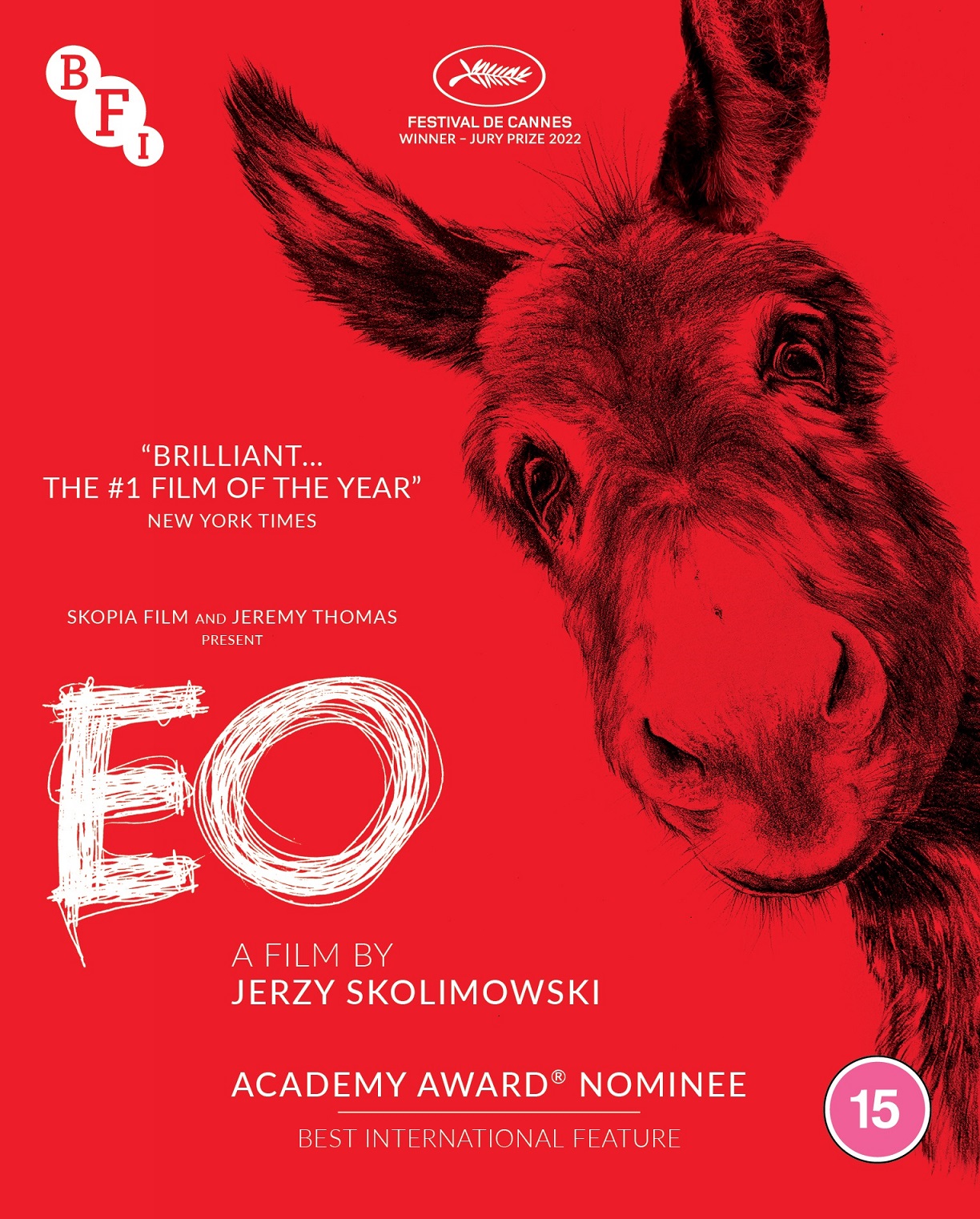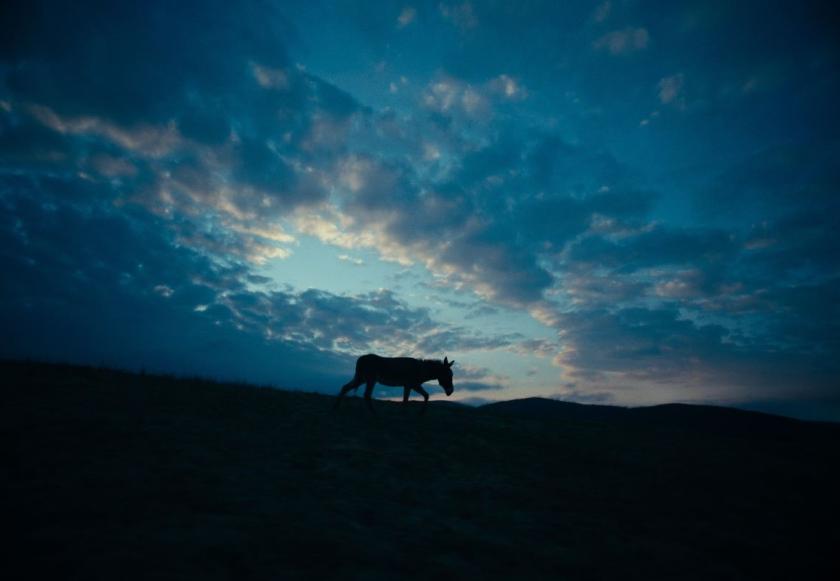The ne plus ultra of donkey films remains Robert Bresson’s heartbreaking Au hazard Balthazar (1966). Veteran Polish director Jerzy Skolimowski’s EO, premiered at last year’s Cannes Festival, is a very loose variant, Skolimowski revealing in a booklet interview with David Thompson that Balthazar “was the only film at which I really shed a tear at the end”.
Watching the earlier film after seeing EO highlights how very different the two films are. Bresson’s donkey is seen very much through the eyes of the humans who variously love and abuse him, while Skolimowski shows us a confusing, often brutal world as perceived by the titular Eo, with frequent close-ups of his deep, dark eyes. You’d never suspect that Eo is actually played by six different Sardinian donkeys, Hola, Tako, Marietta, Ettore, Rocco, and Meia all credited in the BFI’s booklet.
We first meet him as a circus performer, loved by co-performer Kasandra but abused by his owner; watching poor Eo grudgingly pulling a cart filled with scrap metal looks almost medieval. Protests by animal rights activists get the circus shut down, prompting Eo’s escape. His lowly equine status is signalled early on while he’s being taken to work in a stable, gazing out of his cramped trailer at a group of horses running free. They’re pampered while Eo is a dogsbody; it's hard not to giggle when he accidentally knocks over shelves of trophies. A bucolic interlude showing him giving rides to children is all too brief and Eo is soon moving on.
 Attempting to describe what ensues is near-impossible, but the film follows its own logic and never feels incoherent. Eo has encounters with football supporters (and hooligans), is threatened by hunters and smugglers, at one point even straying into what looks like a 1970s European art movie complete with cameo from Isabelle Huppert.
Attempting to describe what ensues is near-impossible, but the film follows its own logic and never feels incoherent. Eo has encounters with football supporters (and hooligans), is threatened by hunters and smugglers, at one point even straying into what looks like a 1970s European art movie complete with cameo from Isabelle Huppert.
With the help of cinematographer Mychal Dymek, Skolimowski takes us into Eo’s mind; we really do experience things as he does and the occasional surreal flourishes never jar. There’s a startling sequence involving a robotic quadruped, and a striking nod to Eadweard Muybridge’s pioneering attempt to photograph a galloping horse in motion. Shots of spiders’ webs and swimming frogs recall Charles Laughton’s The Night of the Hunter, and gently rotating wind turbines evoke Cervantes’ Don Quixote.
A handful of well-intentioned humans stand out, from the vet who helps Eo recover from a gunshot wound to Kasandra, who tracks him down after the circus closes to give him a carrot-flavoured muffin. Eo’s passivity breaks just once, when he’s living with a brutal furrier and kicks him in the head.
If you’ve watched Balthazar, EO’s ending won’t surprise, the fade to black accompanied by a title card stating that no animals were harmed during production and that EO was made as a gesture towards creatures unable to speak for themselves.
Paweł Mykietyn’s striking spare soundtrack fits this poetic and disconcerting film perfectly. This BFI Blu-ray edition comes with some intriguing bonus features, including a recent interview with Skolimowski and an audio-only A-Z guide to the director’s work from film writer Michael Brooke. As light relief, there’s a daft but entertaining 1980 Children’s Film Foundation offering called High Rise Donkey, starring Wilfred Brambell, Roy Kinnear, Alfie Bass, and, er, Keith Chegwin.















Add comment